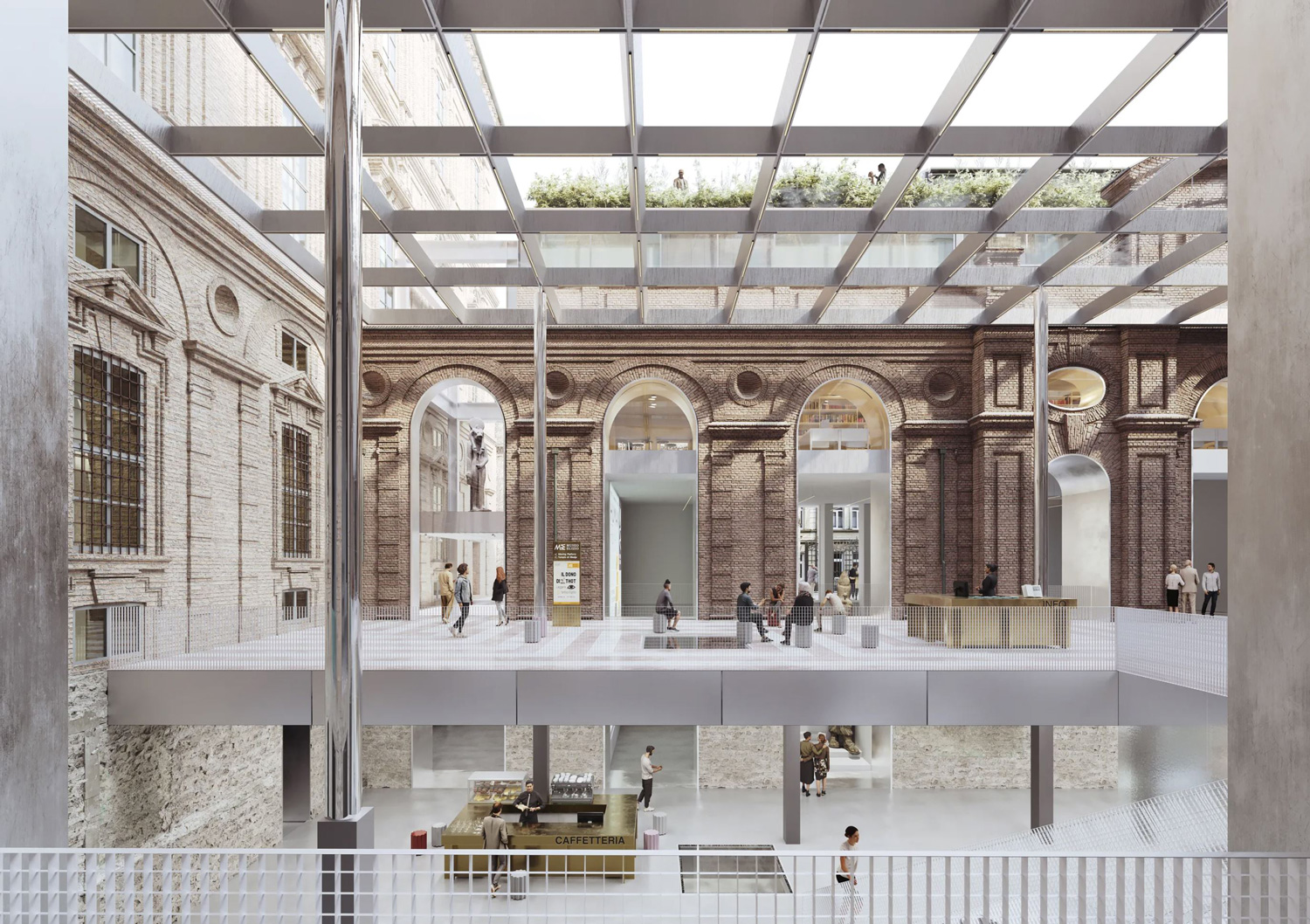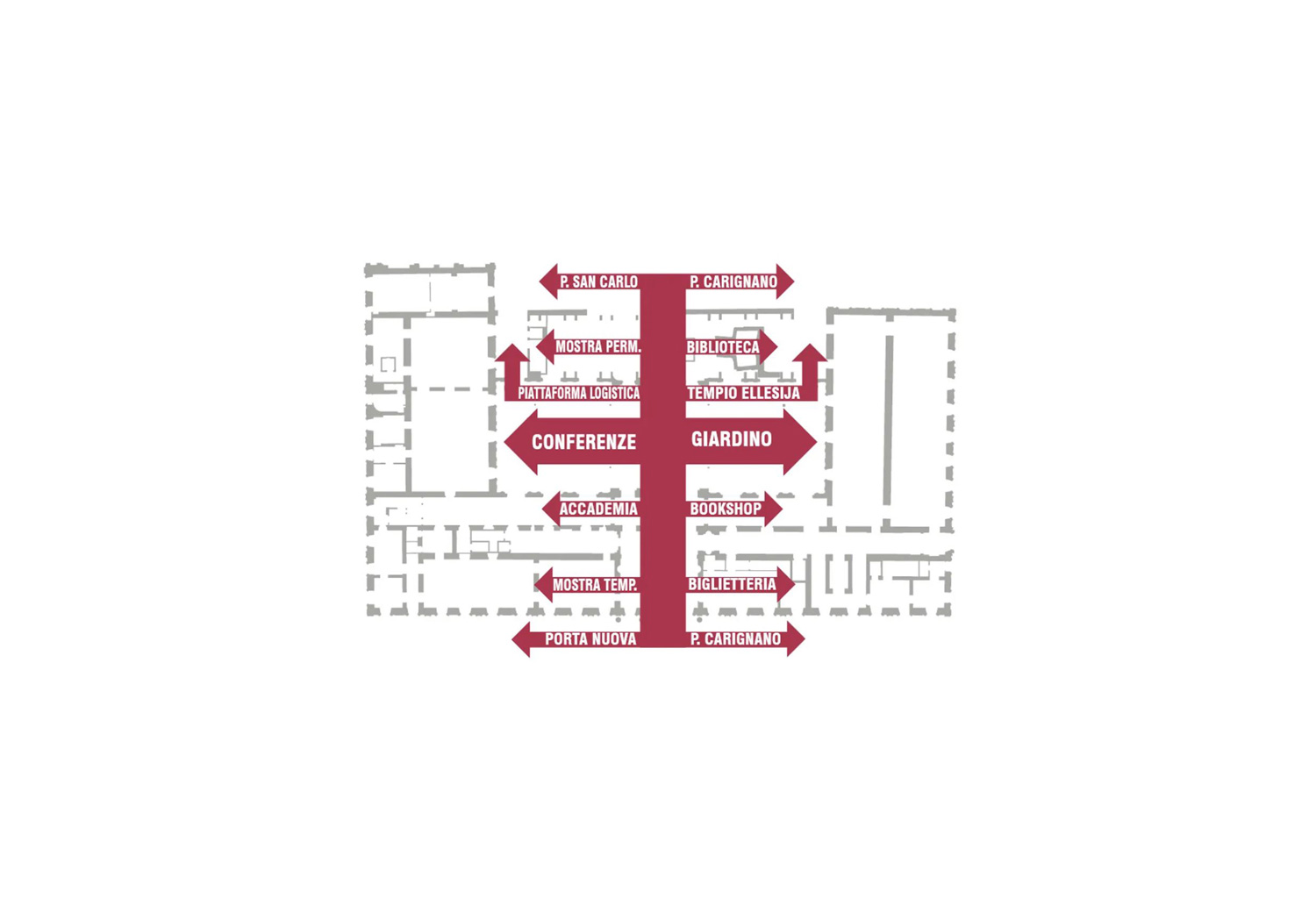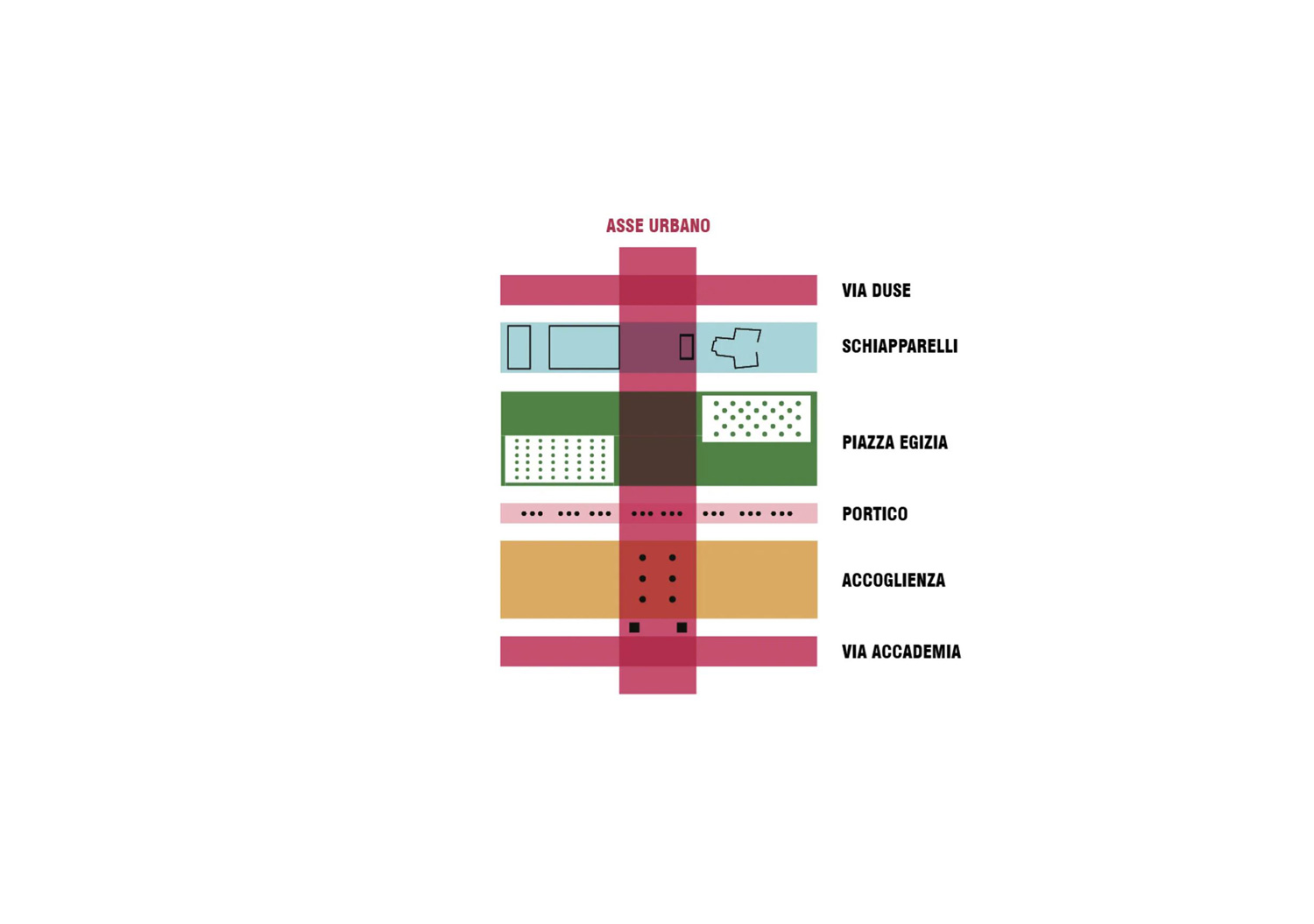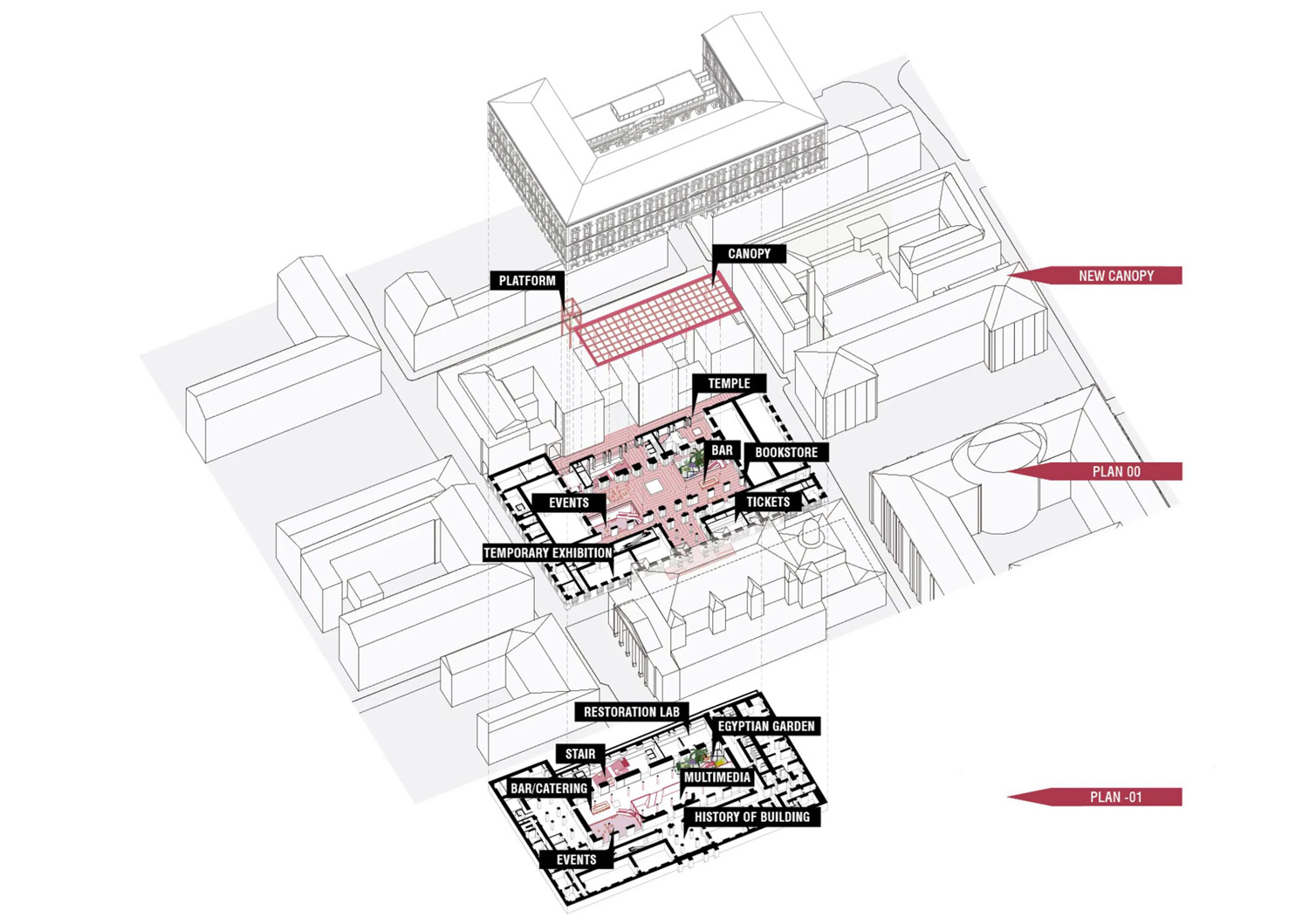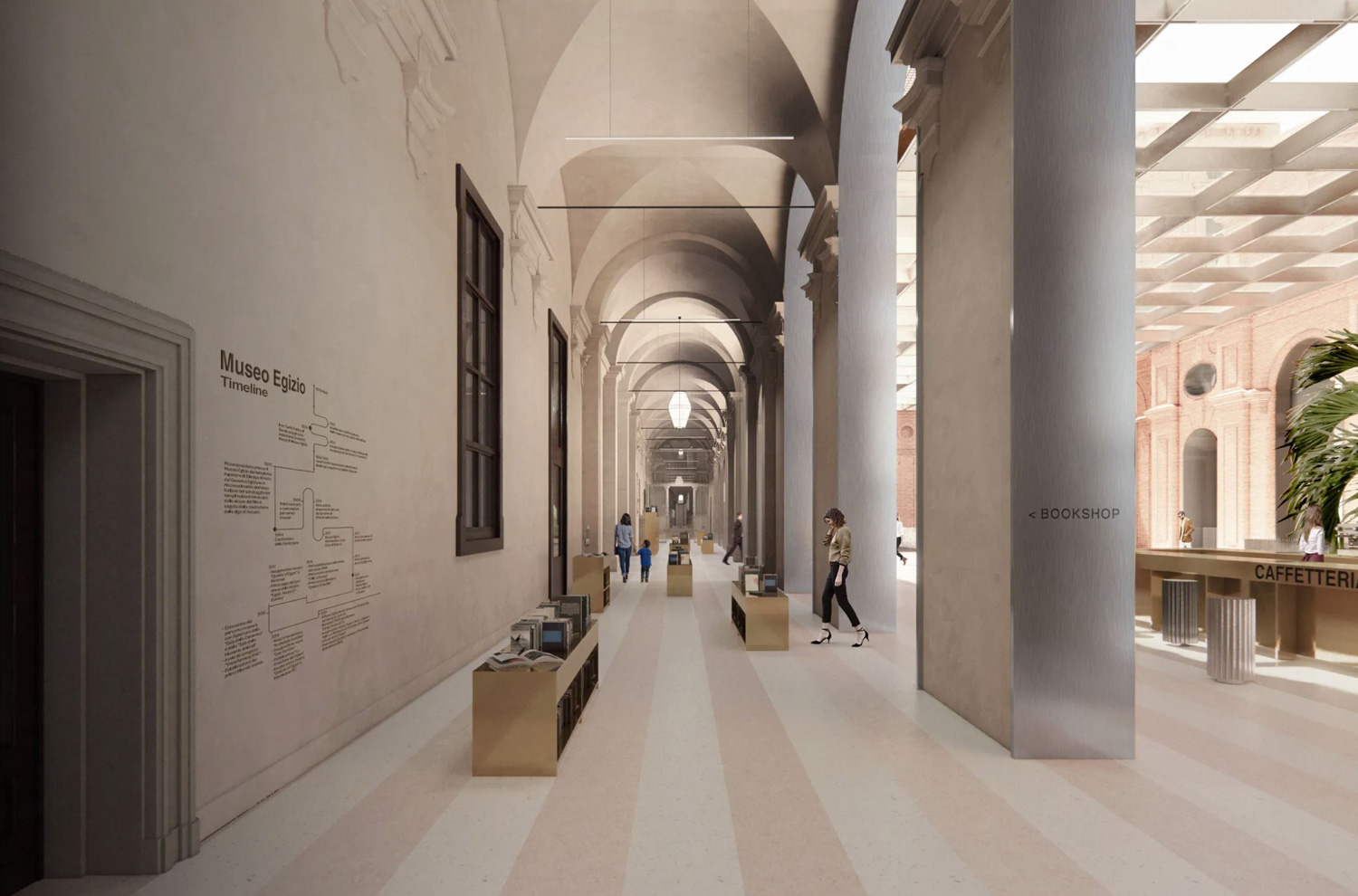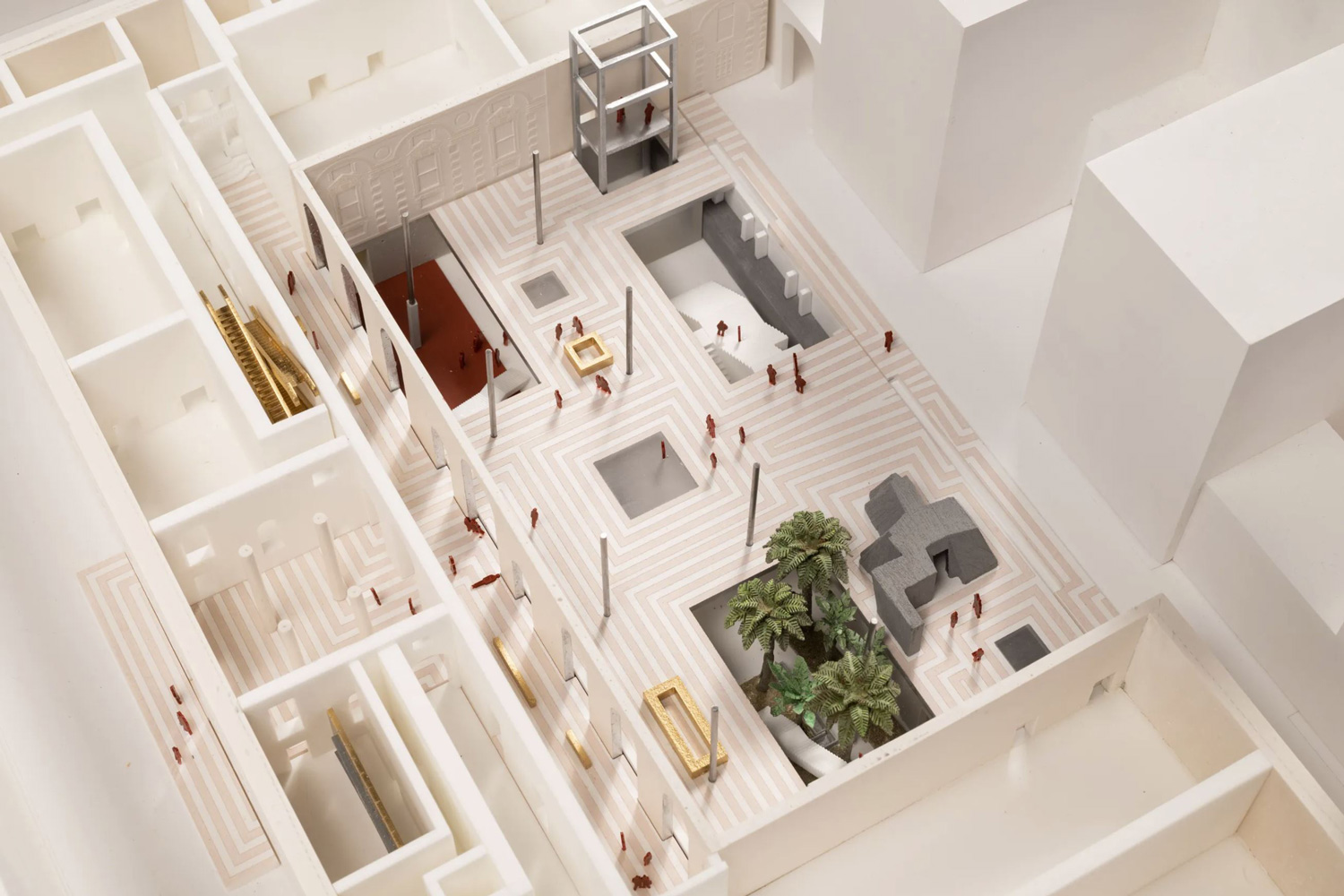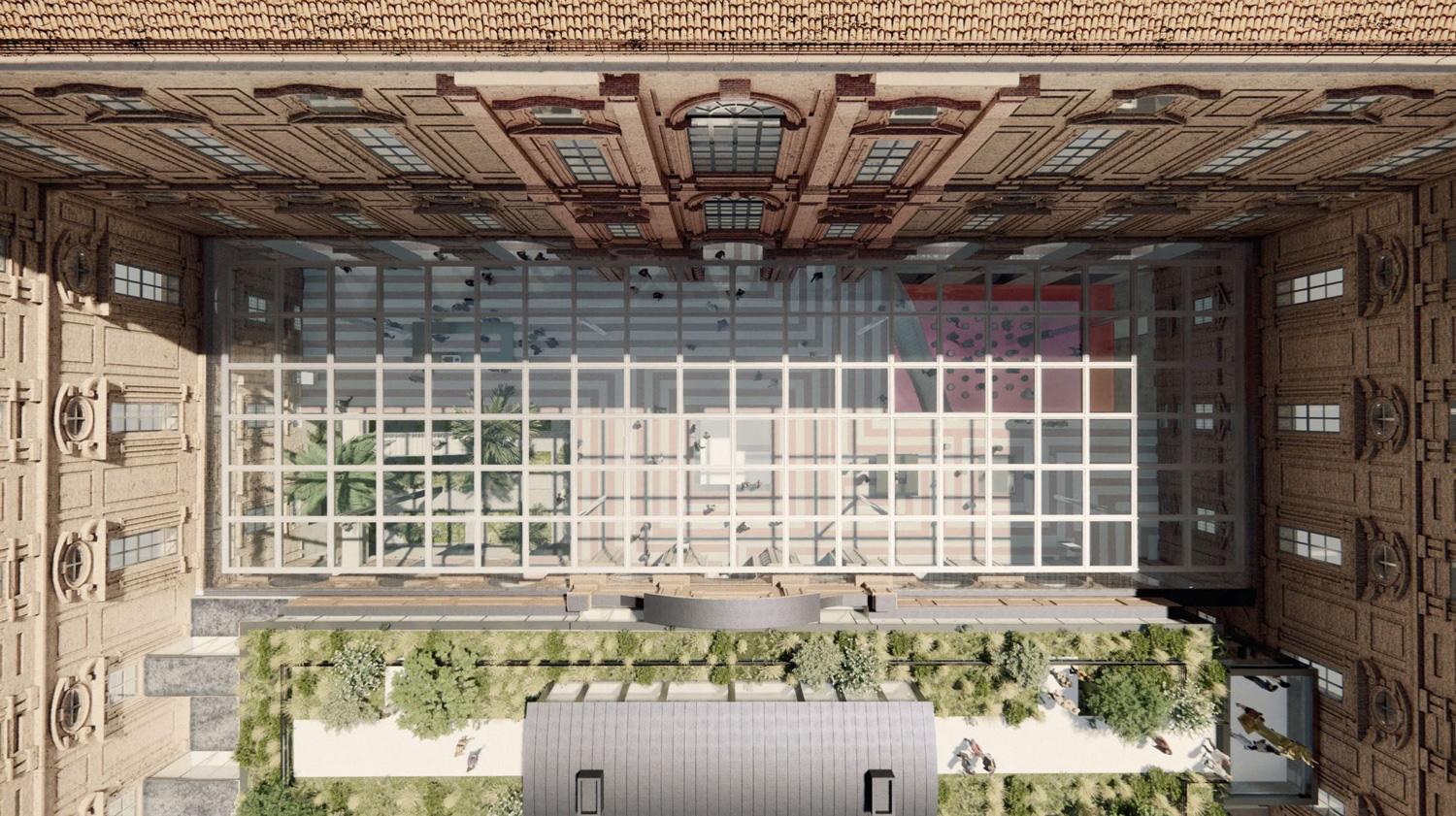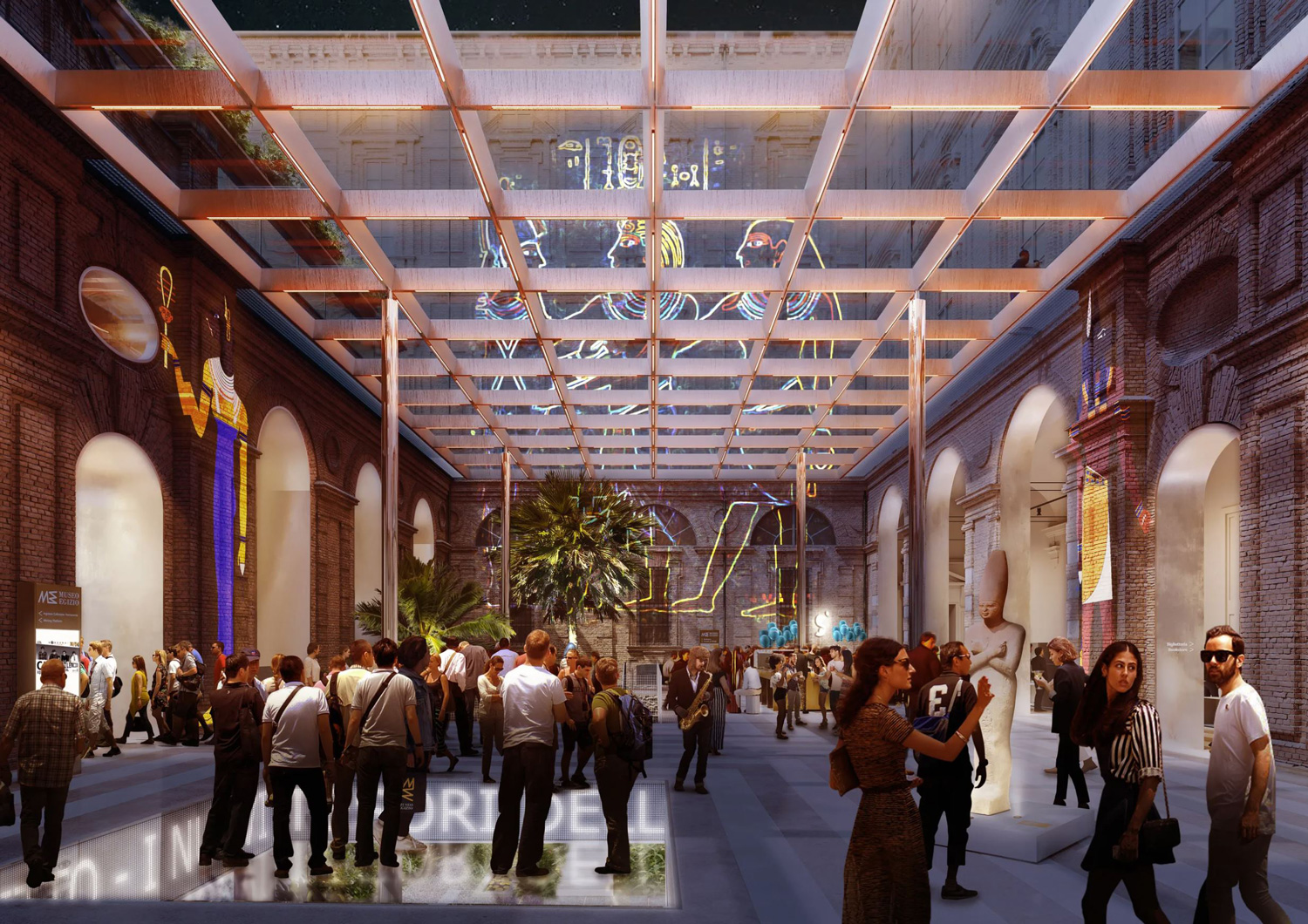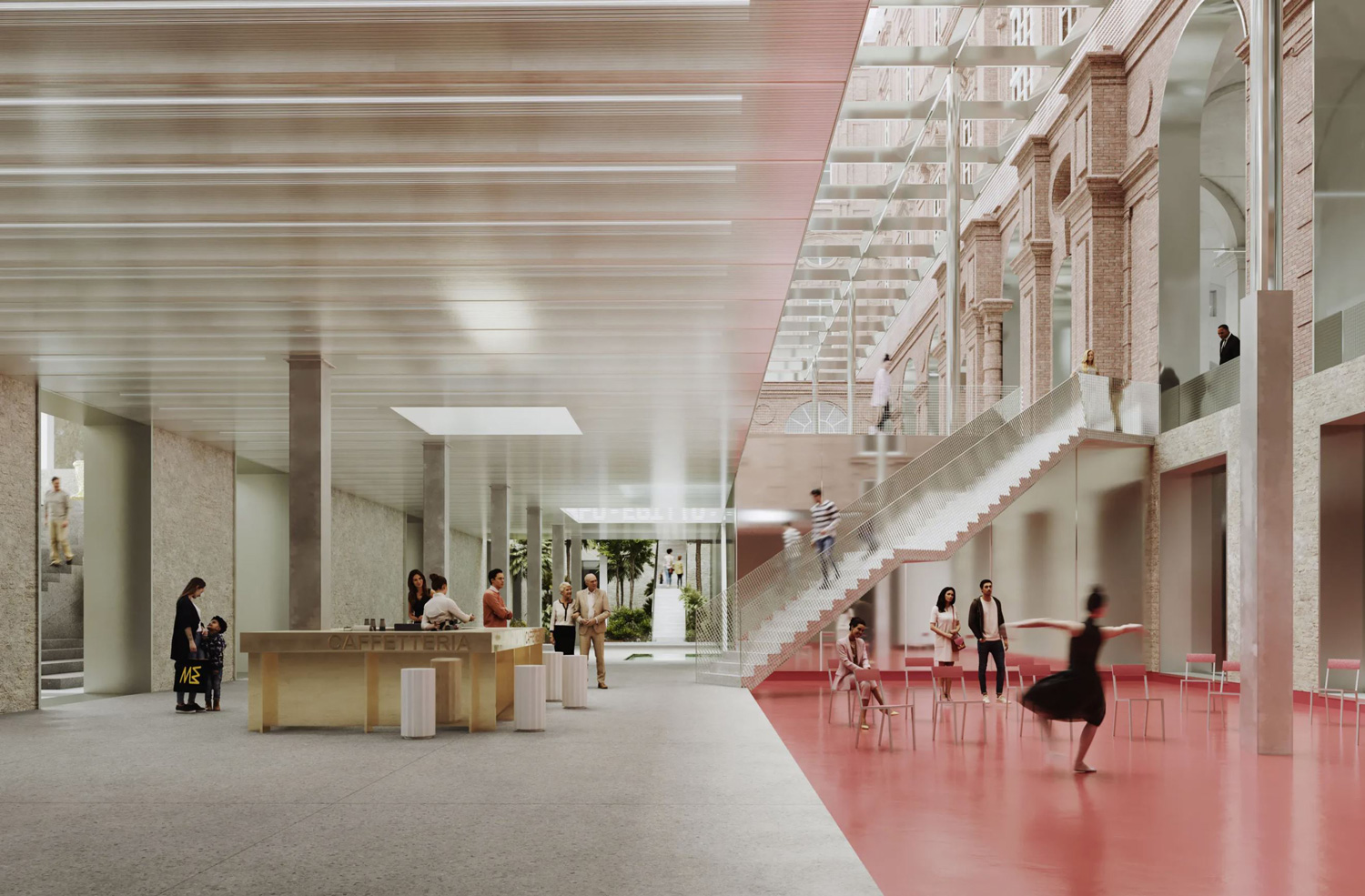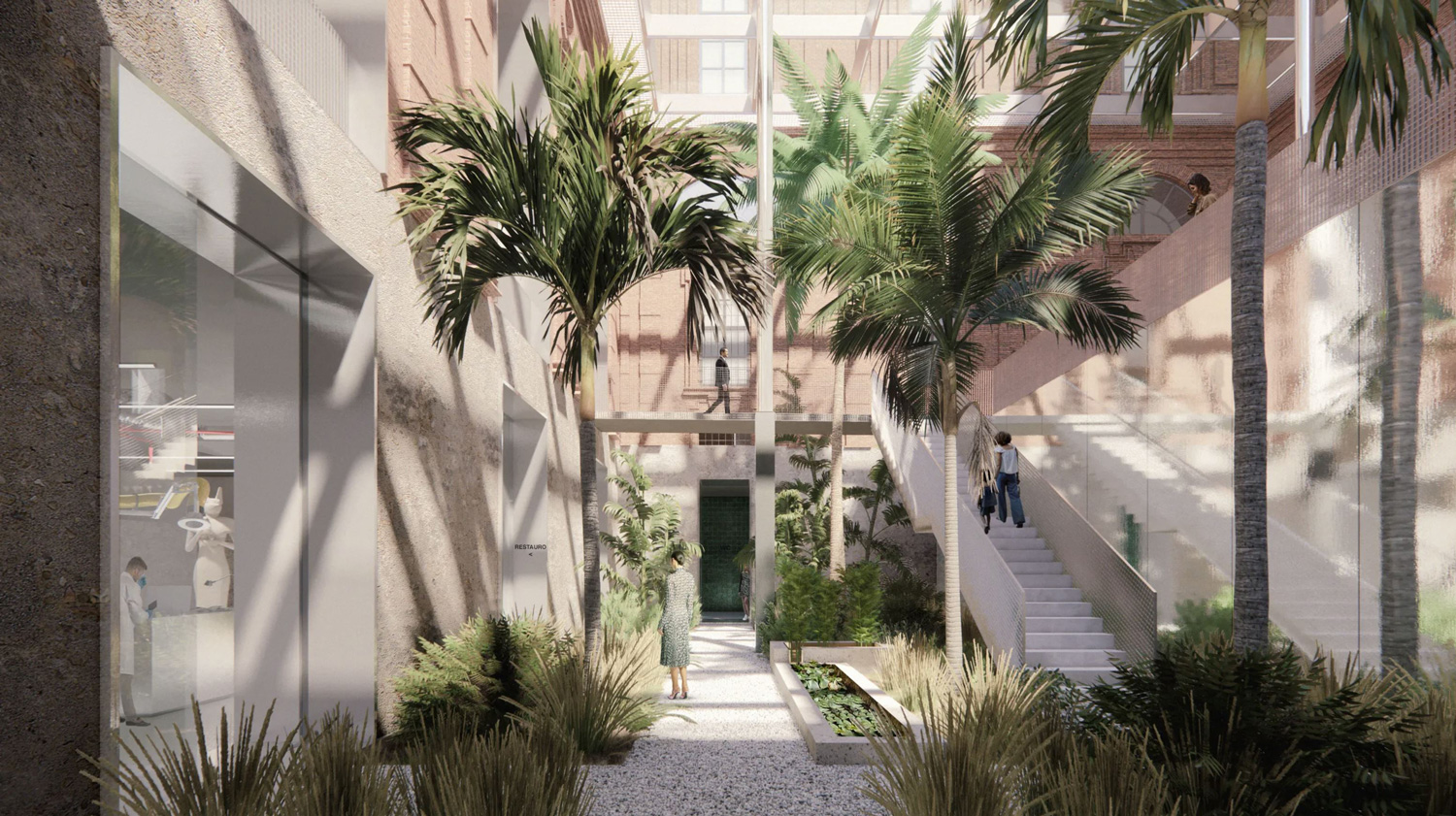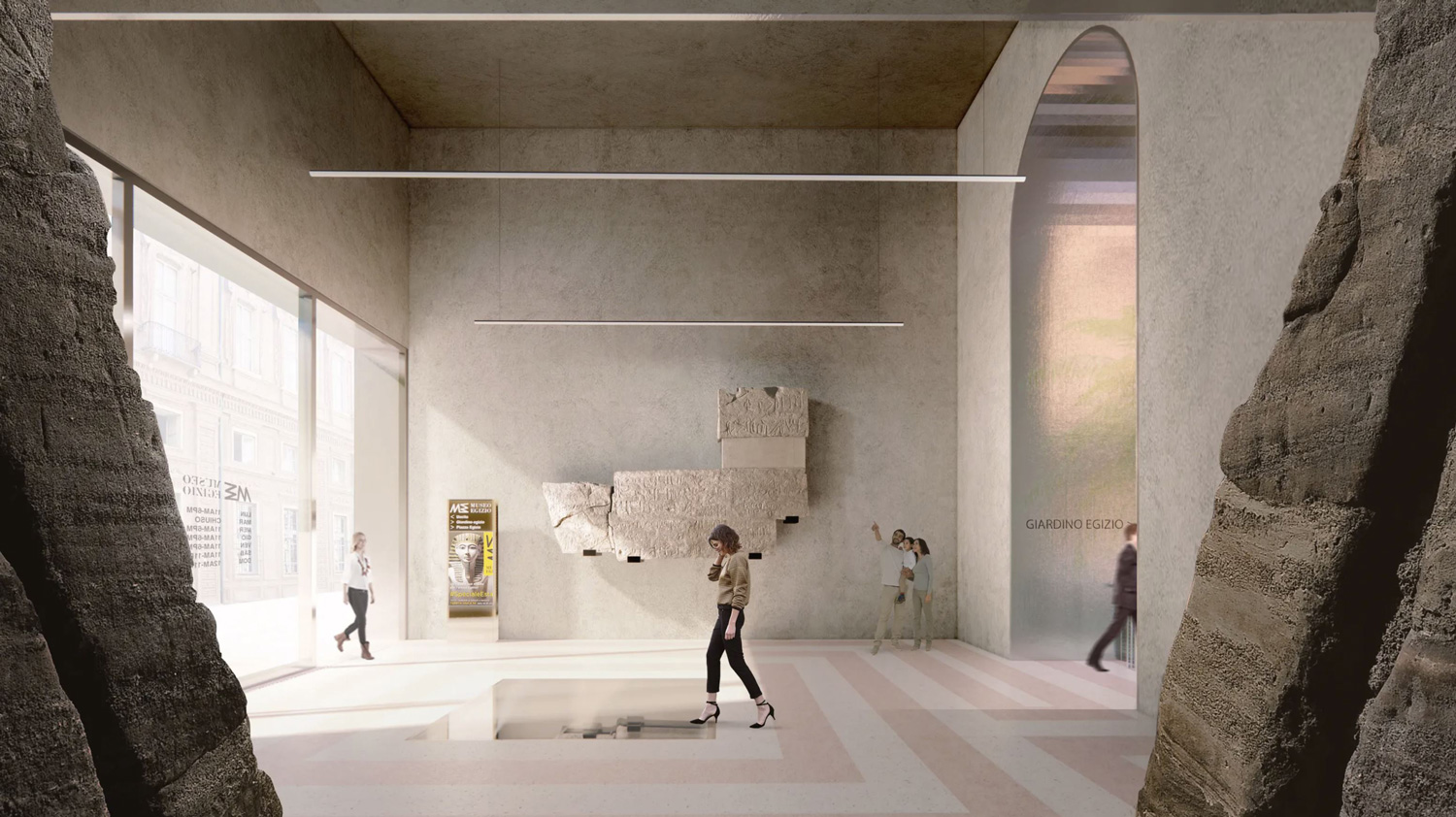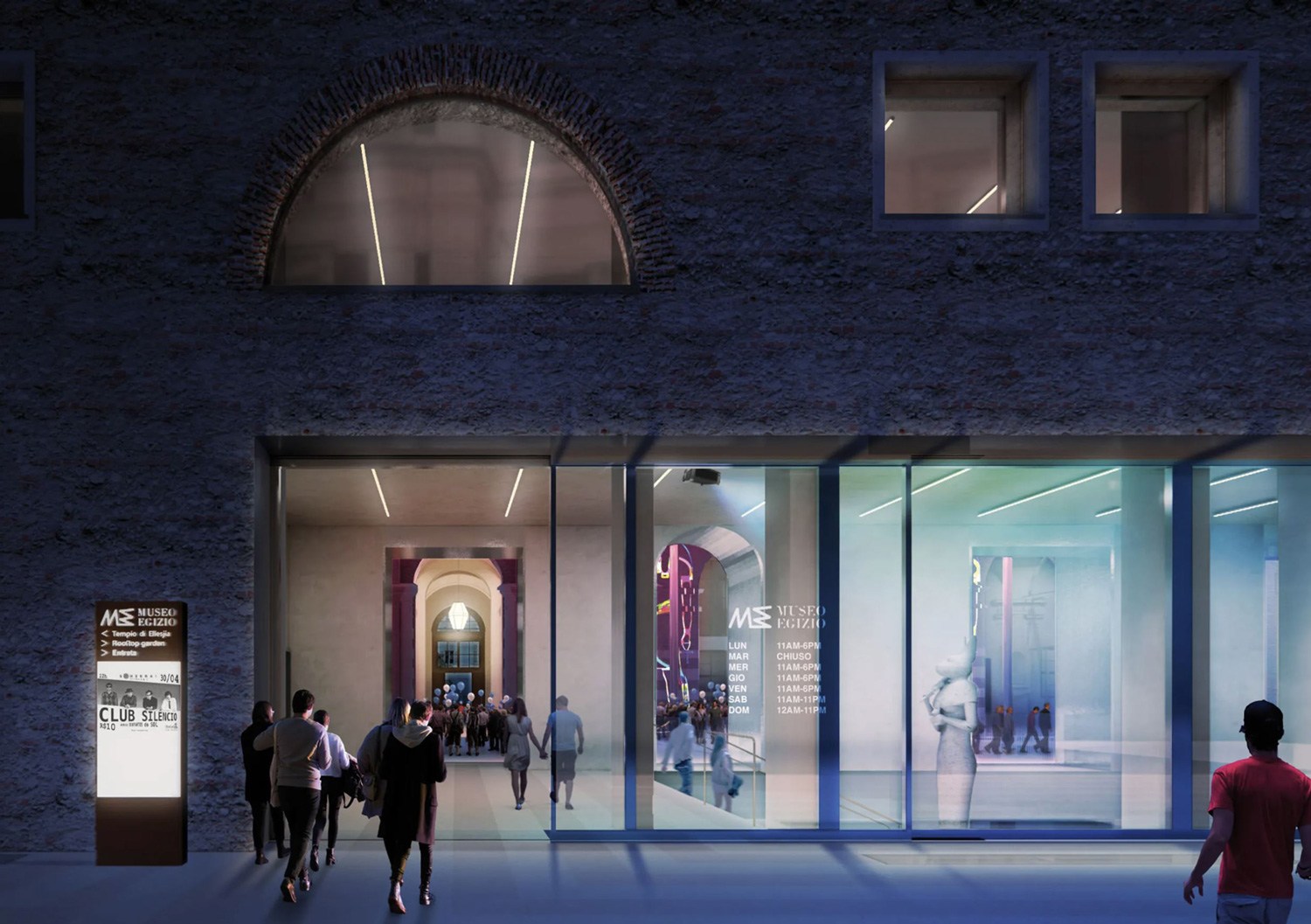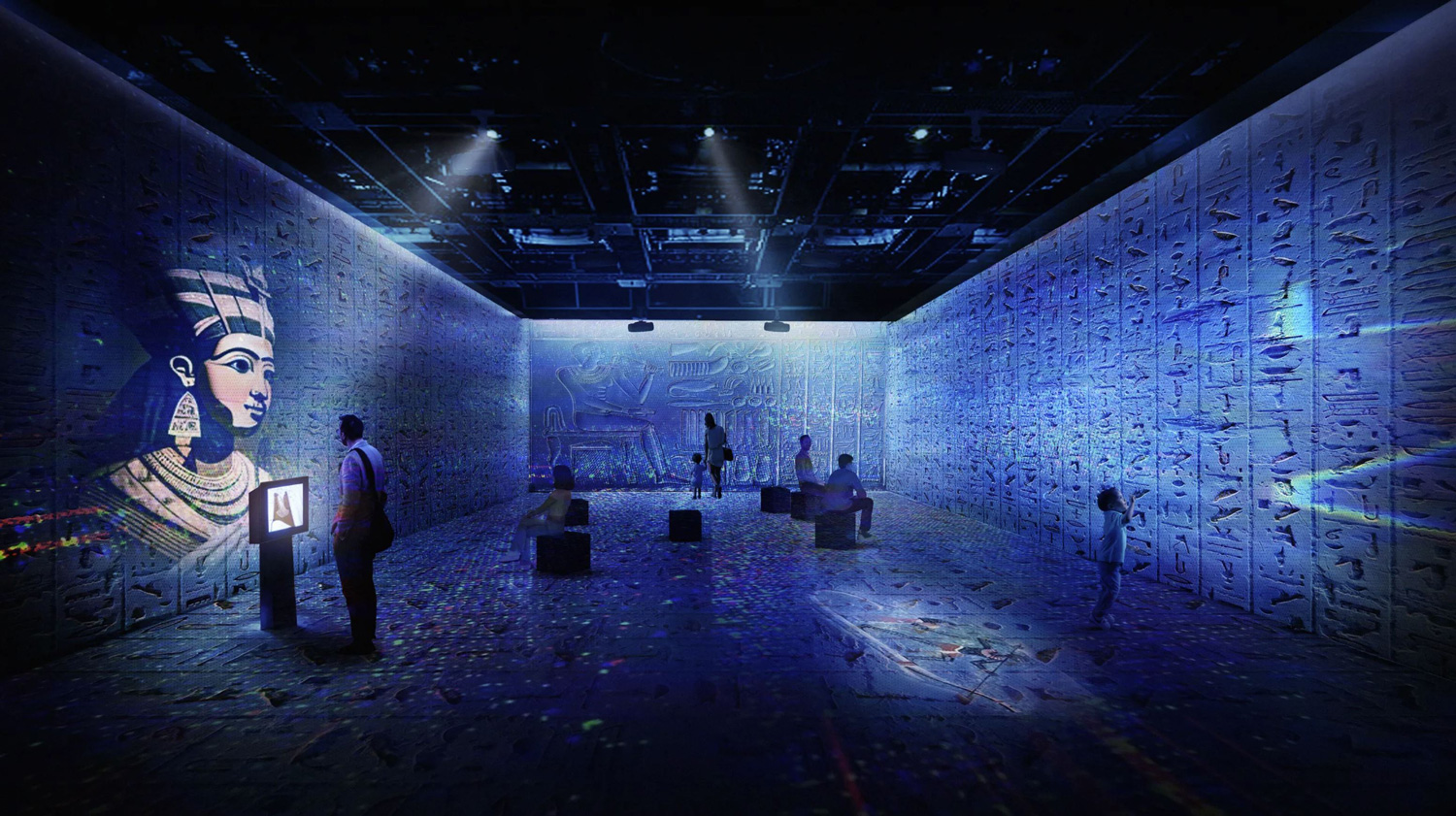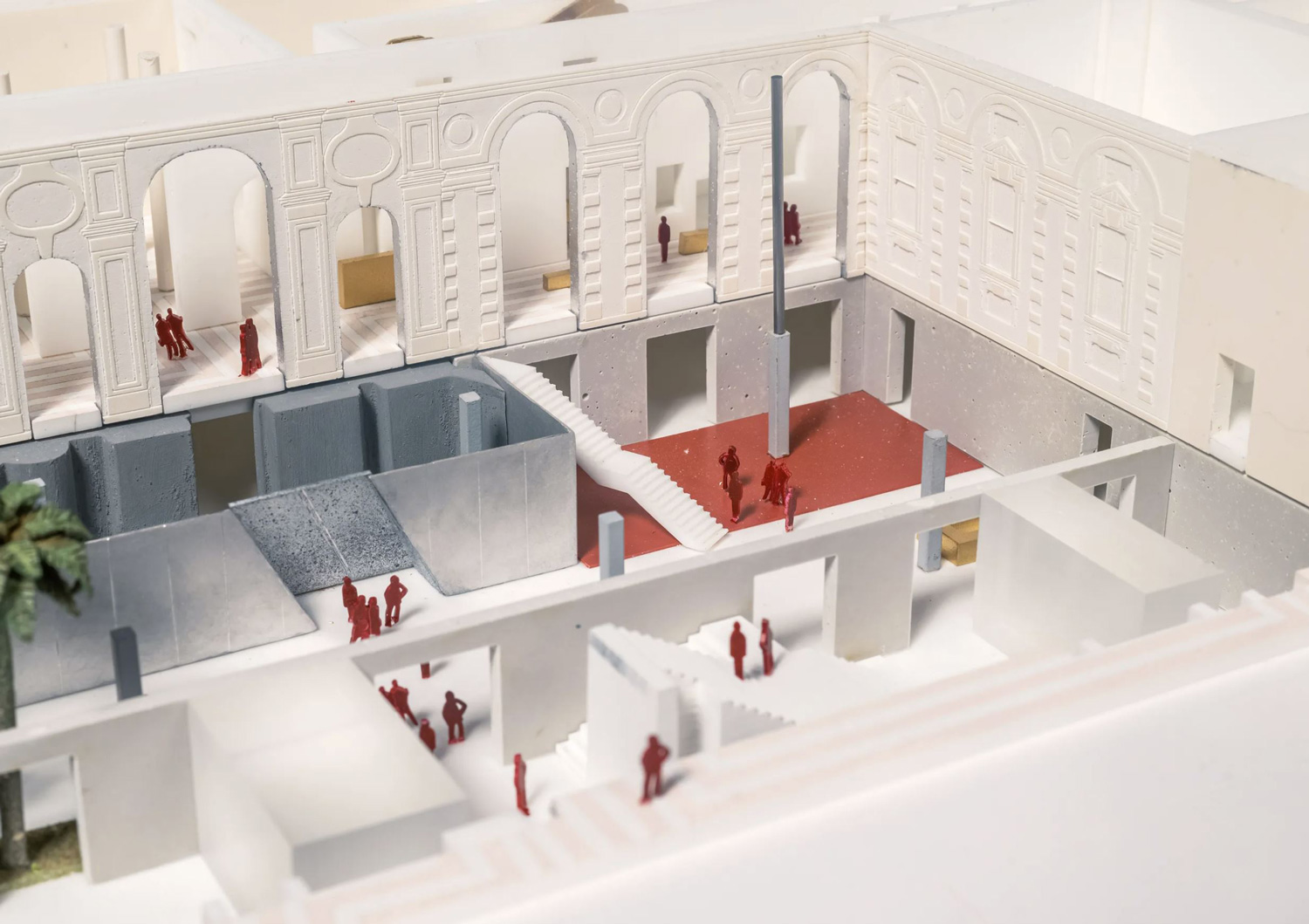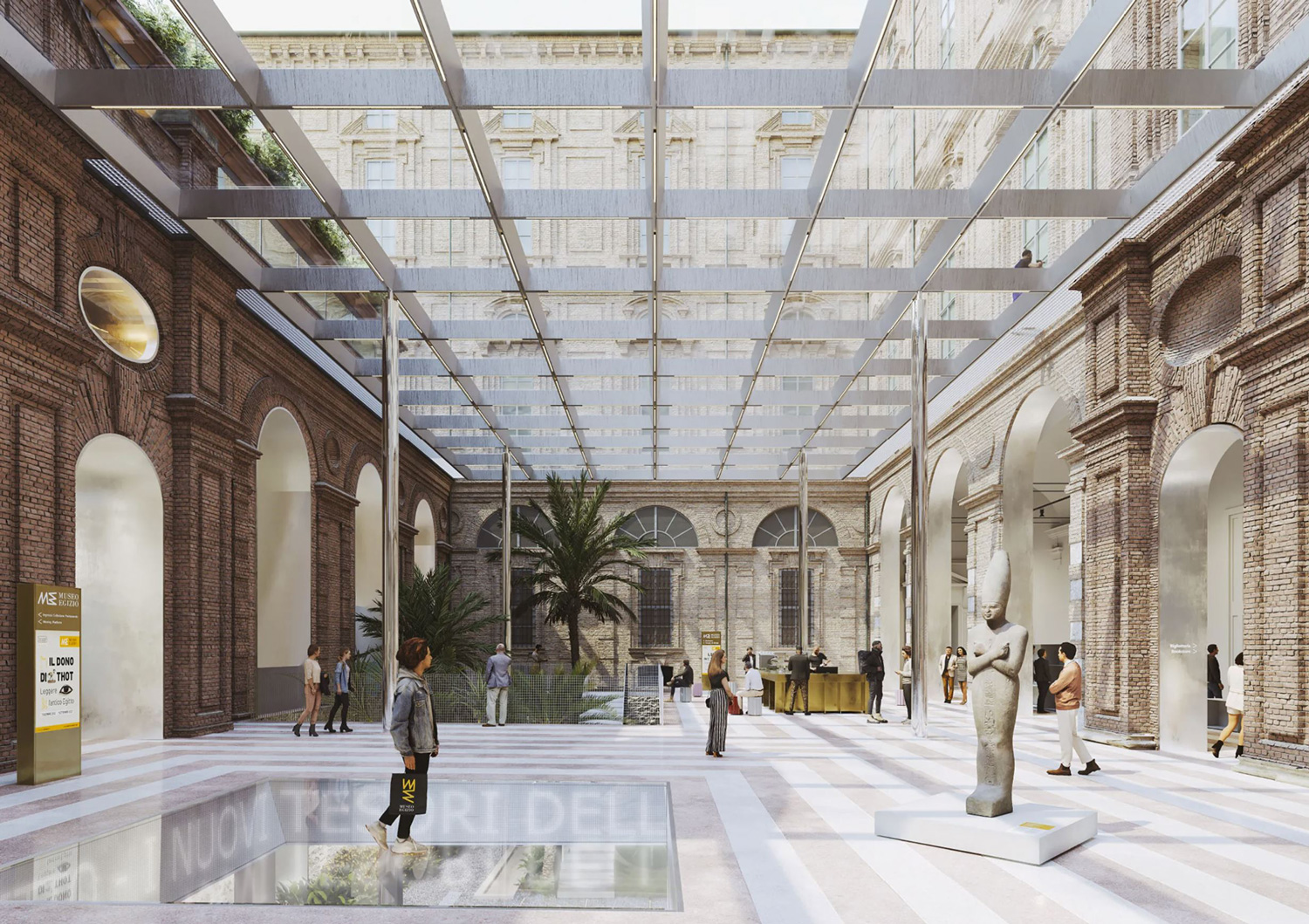2994-OMA-TRN.IT-2023.24
Clients: Compagnia di San Paolo, Fondazione Museo delle Antichità Egizie di Torino, Fondazione per l'architettura
Status: Competition (2023)
Clasification: 1 prize
Location: Turin, Italy
Climate: Temperate, Humid subtropical
Materials: Glass, Brick, Metal
Environment: Urban
Visualizers: Alessandro Rossi, Jeudi Wang
Scale: 4.800 ㎡ Medium
Types: Cultural, Museum, Refurbishment
Museum Egizio founded in 1824 is the world’s oldest museum for Ancient Egyptian culture, housed in Collegio dei Nobili in Turin. A complex consisting of exhibition galleries, the Academy of Sciences, and an open courtyard, the museum’s architecture has undergone numerous alterations in the past two centuries, increasingly becoming enclosed and detached from the rest of the city. Museo Egizio 2024 addresses the museum’s historic role as a main civic space in Turin and its 21st century social ambitions. The design creates a newcovered courtyard known as Piazza Egizia and a series of connected urban rooms open to all, integrating the museum back with Turin’s network of public spaces, while instilling it with a lucid identity.
The project reorganizes the museum’s public areas into six distinctive urban rooms, each with its unique scale, function, and quality. The largest urban room central to the museum is the Piazza Egizia, designed as a public space shared between Museo Egizio and the city. A central Spine connects the six urban rooms together, also to both of the museum’s entrances on Via Accademia and Via Duse. Openings have been introduced to the current building façade on Via Duse, inviting the public into the museum and Piazza Egizia for various daily leisure activities. A geometric ground floor pattern – inspired by the museum’s artefacts such as the Merit’s funerary mask – creates visual continuity across the urban rooms.
The Piazza Egizia is a double-level, multifunctional courtyard conceived as a palimpsest of Museum Egizio’s history. Here, the original architecture and traces of interventions over time are showcased. At level 0, the multiple historic openings of the courtyard – which had been closed since the museum’s 2010 renovation – have been restored, connecting this public space back to the city. At level -1 where the Egyptian Garden and the event and learning space are located, Collegio dei Nobili’s original façade – also concealed since the 2010s – is uncovered. Two ground openings at level 0 – directly above the Egyptian Garden and the event and learning space – bring light and direct visitors to the underground.
A transparent canopy, supported by extensions of existing columns, is installed above the Piazza Egizia to create a tempered environment. The canopy’s aluminium cladded steelstructural grid – defined by the regular rhythm of Collegio dei Nobili’s façade – is in itself a device for rainwater collection, air ventilation, and lighting provision, answering to the museum’s ambitions for sustainability.
The Piazza Egizia and other urban rooms are open beyond working hours and welcome all visitors, with or without tickets. Their public nature offers possibilities for the museum to extend its opening hours. A selection of Museo Egizio’s artefacts is on display for the general public’s initial encounters with the museum collection. From the urban rooms, visitors go on to see the museum exhibitions, or stay for free leisure activities and events, or continue strolling into other civic spaces in Turin.Museo Egizio 2024 isa destination for scholars and an interested public, and a rediscovered public place for all.
